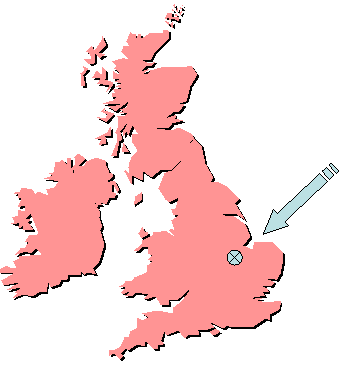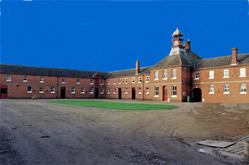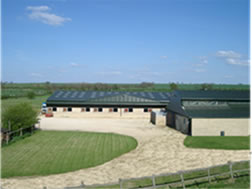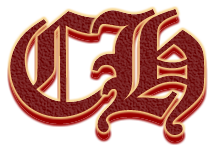Introduction to the Cottesmore Hunt
The Cottesmore hunts a country south of Melton Mowbray extending (clockwise) in the east to the Wash, in the south to the River Welland and the A47,
 and in the west to the Quorn's own territory. It covers the county of Rutland and parts of west Lincolnshire and east Leicestershire.
and in the west to the Quorn's own territory. It covers the county of Rutland and parts of west Lincolnshire and east Leicestershire. Its immediate neighbouring packs (clockwise from Melton) are the Belvoir (Duke of Rutland's), Fitzwilliam (Milton), Woodland Pytchley, Fernie and Quorn. The hunting countries of the Cottesmore, Belvoir and Quorn notionally converge in Melton Mowbray market place, and on New Year's day these three take it in turn to meet in Melton Mowbray, although the venue has been moved from the market place to the nearby Play Close park.
Until the 1980s, the Cottesmore hunted Monday, Tuesday, Thursday and Saturday. Since then, it has hunted three days a week (with some bye-days) and currently hunts Tuesday, Thursday and Saturday with variations at Christmas.
Between 1890 and 2004, the hunt kennels, stables and staff accommodation were a large complex of buildings
 on the road between Oakham and Ashwell on the disused Oakham-to-Melton canal. These eventually became far too cumbersome and unsuited to present-day use, and the growth in passing traffic made hound exercise difficult. Thus, in 2004, the Hunt moved to its current purpose-built premises at Eastfield Farm on the Ashwell-to-Cottesmore Road.
on the road between Oakham and Ashwell on the disused Oakham-to-Melton canal. These eventually became far too cumbersome and unsuited to present-day use, and the growth in passing traffic made hound exercise difficult. Thus, in 2004, the Hunt moved to its current purpose-built premises at Eastfield Farm on the Ashwell-to-Cottesmore Road.
The Hunt is run by a Committee, but assets such as the Kennels, hounds and the coverts belonging to the Hunt are held in trust by independent trustees. The Committee has nine elected members, three of whom are subscribers, three are landowners and three farmers, all drawn in equal proportions from the different areas of hunted country (as far as is possible). The Committee acts as a board of non-executive directors who, from year to year (1st May - 30th April), delegate the provision of hunting and the management of the staff and kennels to Masters appointed by them and who are not Committee members. The Masters are also entrusted with developing and maintaining good relations with farmers and landowners whose permission is needed for hunting over their land and without whose co-operation hunting would cease.
The Hunt has a written Constitution and you can view or download a copy from here.
Anyone wishing to hunt on horseback regularly must subscribe. Visitors must pay a ‘cap’and hunt by invitation of the Masters. Intending subscribers and visitors should contact the Secretary.
Acceptable ways for subscribers and visitors to dress while hunting are arcane and determined by the Masters; intending riders should, if unclear, contact the Secretary for advice. Both formal hunting wear (black or red coat for men and dark blue or black coat for women – all worn with a hunting tie) and ‘ratcatcher’ (brown coat with collar-and-tie or brown hunting tie) are acceptable. The wearing of safety riding caps is also permitted.
There are, however, two discourtesies which will be frowned on: wearing Cottesmore Hunt buttons on your coat unless you have been ‘awarded your hunt button’ by the Masters, and (for men) not fastening up your cap ribbon.
The February 2005 hunting ban necessitated major changes in how hunting was conducted in order to conform to the new law. The Cottesmore now practises both line hunting (following a trail laid by Hunt staff or supporters) and the flushing of foxes to a bird of prey which is explicitly permitted by the Hunting Act.

